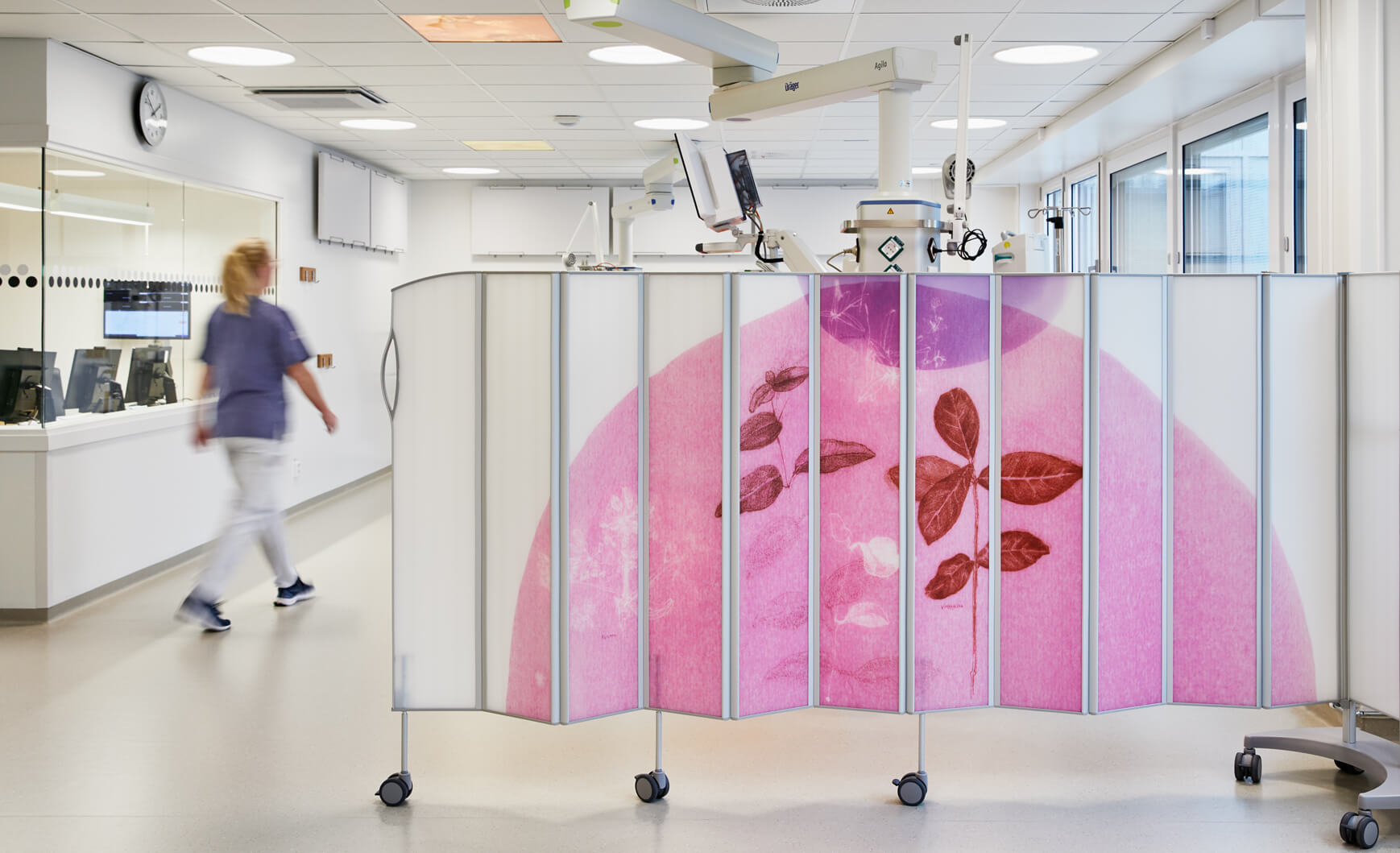
Stockholm South General Hospital has designed a neonatal ward with art as an important part of the design. Silentia’s folding screens are an integral part of the project, which was done in close collaboration with Swedish artist, Elisabeth Henriksson. For two years, Henriksson developed the art for the privacy screens and talked with the staff to understand the feel and atmosphere of the neonatal ward.
Art supports everything we do
“It is important for us that art can function in a hygienic setting as well,” says Marina Adler-Runow, head of the neonatal unit. “Therefore, the solution with art printed on Silentia’s hygienic folding screens is really perfect. The beautiful colors bring warmth and calm to the rooms and, as we told the artist, we work with providing a safe and comforting environment. We meet parents, who are afraid and worried about their children. They are often here for several weeks, so it is important that the imagery help create a calm and safe atmosphere. In this way, the art will complement the staff and everything we do,” says Marina Adler-Runow.
Nature’s plants as a symbol of nurturing
Artist Elisabeth Henriksson was commissioned to create the artistic design for the neonatal ward. She developed the imagery based on a discussion with the staff about the emotional state in the ward. “My idea was to show that medicinal plants and herbs are symbols of caring and nurturing. I drew plants, painted round shapes, and then processed the drawings digitally.”

Transparent Daylight folding screens provide privacy while allowing the daylight to flow into the room.
High-quality art to match the quality of care
Elisabeth Henriksson is very pleased with the result and the quality of the art printed on Silentia’s transparent Daylight folding screens, which provide privacy while still allowing the daylight to flow into the room. “The printed colors turned out on the screens exactly as I wanted them to, and the transparency of the screens captures the light beautifully. I have worked on illustrating feelings in the drawings, to make them ‘alive’ and unique. As if nature becomes an image of us humans.”

Look up!
As an extra, surprising detail, the artist has placed colored light boxes in the ceiling so that parents can sit in comfortable chairs and look up at the ceiling where the light has the same colors as the screens.
The importance of art in healthcare environments
Project manager, Susanne Andersson Kopp, at the cultural administration in Region Stockholm, leads these projects with organizations, staff, artists, architects, and construction management throughout the process. “The whole art project has been absolutely fantastic. Together we have created a calm environment both architecturally, artistically, and in terms of materials and the collaboration with Silentia has also worked well.”
“Art clearly has an impact on our physical and mental health, and helps to break the institutionalization of healthcare,” says Susanne Andersson Kopp.

The art project is a collaboration between the neonatal department, the cultural administration, and Region Stockholm. Whenever the Stockholm Region has new building projects, the rule is that up to two percent of the costs must be used for artistic design. This is called “the percentage rule.” Region Stockholm has one of the country’s largest collections of public art.
Stockholm South General Hospital, Södersjukhuset, is an acute care hospital in an urban setting, and one of the largest hospitals in Stockholm, Sweden.
Read more on how arts improve health and well-being:
CultureForHealth Report »
What is the evidence on the role of the arts in improving health and well-being? A scoping review
WHO (2019)



